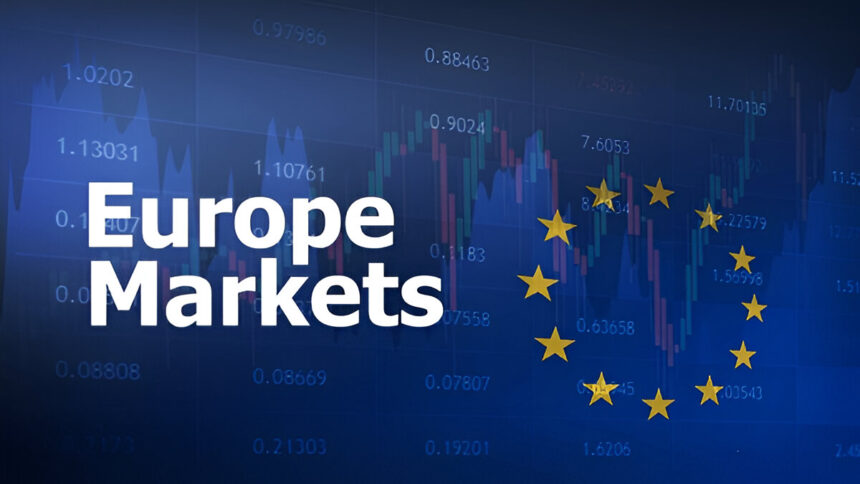The financial world woke up to a sharp reminder of market interconnectedness and the powerful impact of trade policy. On August 1, 2025, a wave of sell-offs swept across Europe, causing a European market plunge, with the Euro Stoxx 50 plummeting 2%. The decline wasn’t an isolated event. Major indices like the DAX and CAC 40 fell in tandem, reflecting a coordinated investor reaction to new tariff uncertainties. For those who have been in the markets for a while, the present isn’t a new story but a familiar tune with a fresh set of players. Traders and investors now ask, what does this mean, and how do we deal with this uncertainty?
Why Do Markets React So Violently to Trade Policy?
When a government announces tariffs, it’s not just a headline; it’s a direct threat to corporate earnings, supply chains, and the fundamental economics of global trade. The immediate fear among investors is that these measures will trigger a cascade of negative effects, from rising input costs and inflation to reduced consumer demand and a slowdown in economic growth. This uncertainty makes it difficult for analysts to accurately forecast future revenues and profits, leading to a de-risking event where capital flees to safer havens.
There was a time, many years ago, during the late 90s, when a seemingly innocuous trade dispute between two major economies led to currency fluctuations that seemed detached from traditional economic data. The initial reaction in equities was muted, but a profound ripple was experienced through the Forex market, with violent, uncharacteristic swings suddenly being seen in seemingly stable pairs. Then, it became evident that the market’s risk pricing extends beyond direct corporate balance sheets, forming a complex web of interconnected probabilities, with trade policy at its core. Observing how quickly institutional algorithms responded to the nuanced language of official statements, rather than just the explicit tariff imposition, was a revelation about the depth of anticipation built into modern markets.
What is the Immediate Impact of New Tariffs on European Indices?
The immediate impact is a broad-based sell-off as investors reprice risk. On August 1, 2025, we saw this play out in real time. The Euro Stoxx 50, representing the performance of the 50 largest companies in the Eurozone, fell by 2%. This drop was mirrored by the DAX in Germany, which saw a decline of 1.94%, and the CAC 40 in France, which dropped by 2.12%. This widespread downturn isn’t a coincidence; it reflects the deep trade integration of these economies and their shared vulnerability to global trade shocks. The rapid and coordinated sell-off indicates the pricing in of a systemic risk, rather than a single company or sector issue.
I recall a moment in the early 2000s when a similar cross-border event triggered a sudden, synchronized liquidity drain. One evening, an unexpected announcement from a major trading bloc about steel imports caused a gap down across multiple European futures contracts at the open. The sheer speed of the move, before most retail traders even had their coffee, illustrated how quickly the large players with sophisticated models re-evaluated positions. It imparted a crucial lesson about anticipating these “first reactions” and comprehending that index movements aren’t solely influenced by individual factors, but also by a collective, sometimes instantaneous shift in perceived systemic risk.
How Does This Market Plunge Compare to Past Events?
Seasoned investors understand that history, while not repeating itself exactly, often rhymes. This recent market reaction is no exception. A BlackRock report from April 2025 provides a crucial point of reference, noting a 10% decline in the S&P 500 after previous tariff escalations. This precedent highlights a consistent pattern: when trade policy becomes unpredictable, markets respond with a sharp, immediate withdrawal of risk. These moments test investor resolve and can separate short-term traders from long-term strategists.
In the mid-2010s, a period of escalating trade rhetoric unfolded. I remember a distinct phase unfolded in the market. First came the initial shock. Then a “wait and see” period began. Markets attempted to minimize the potential negative impact. When tariffs finally hit, the actual move was often less severe. This was compared to the initial “fear premium.” However, subsequent volatility was prolonged. This experience taught a key lesson. Anticipation of tariffs can be more impactful. This is compared to their actual implementation. Opportunities arise for discerning traders. They differentiate emotional reactions from fundamental shifts. It is about pricing patterns of uncertainty. The uncertainty itself is not the sole focus.
What Do Academic Studies Say About Tariff Uncertainty and Volatility?
The connection between tariff uncertainty and market volatility is not just anecdotal; it’s a well-documented phenomenon. A 2024 study provided empirical evidence. It appeared in the Journal of Financial Economics. Tariff uncertainty can boost market volatility. This increase can be 15–20% in affected regions. This shows a critical point. Tariffs alone are often not the primary issue. The real damage arises from the uncertainty that has been created. Businesses then delay new investments. Supply chains also face disruption. Investors demand higher risk premiums for assets. All these factors fuel a more volatile trading environment.
What’s Next for Traders and Investors?
Given this backdrop, what is the best path forward? The most prudent approach is to focus on a strategic, long-term perspective while managing short-term risks.
Examine Sector-Specific Vulnerabilities: Avoid viewing the market as a single entity. Tariffs hit different industries unequally. Export-heavy sectors, particularly in manufacturing and automotive, often experience the initial impact. Domestically focused consumer staples or utilities may be more insulated.
Focus on Risk Management: Volatility means wider swings and the potential for larger losses. Now is the time to review your portfolio’s risk exposure, consider diversification strategies, and perhaps tighten stop-loss orders.
Search for Opportunities in the Noise: While many see panic, a seasoned eye searches for opportunity. Significant market drops can present a chance to acquire high-quality assets at a discount. However, such an investment requires a clear understanding of what you’re buying and a belief in the long-term fundamentals of the asset, separate from the temporary headline risk.
The Long View: A Final Thought
We deeply link global politics with our portfolios. Economic policy impacts investments directly. The recent market turmoil strongly reminds us of this. On August 1, 2025, reactions were swift. Tariff anxiety is clearly still potent. Successful traders do not panic. Successful traders understand underlying drivers. These individuals anticipate potential fallout. They then execute a disciplined plan. As the dust settles, the real test will be to discern the temporary noise from the long-term signal.
What are your thoughts on how central banks might respond if this tariff uncertainty escalates further, and how would that impact your investment strategy?
European Markets and Trade Tariffs FAQs:
[sc_fs_multi_faq headline-0=”h2″ question-0=”What are tariffs, and how do they impact international trade and global markets?” answer-0=”Tariffs are taxes on imported goods. They make imports pricier, aiming to protect domestic industries. However, they can disrupt global supply chains, increase consumer prices, and often lead to retaliatory tariffs, resulting in trade wars that reduce global trade and economic growth and increase market volatility.” image-0=”” headline-1=”h2″ question-1=”How do tariffs specifically affect the Eurozone economy and its key industries?” answer-1=”Tariffs on European goods, particularly from major partners like the US, directly increase export costs for Eurozone industries, reducing their competitiveness and profitability. This disproportionately impacts export-oriented economies like Germany and sectors such as automotive, machinery, and pharmaceuticals, potentially leading to reduced GDP growth, job losses, and shifts in global supply chains away from Europe.” image-1=”” headline-2=”h2″ question-2=”What factors, beyond tariffs, most significantly contribute to sudden market plunges within European financial markets?” answer-2=”European market plunges are often driven by factors like unexpected shifts in European Central Bank (ECB) monetary policy, adverse Eurozone economic data (e.g., inflation, unemployment), political instability within EU member states or the bloc, sovereign debt crises, and global events that disrupt Europe’s trade or energy supply, such as the Ukraine conflict or major geopolitical tensions affecting energy prices.” image-2=”” headline-3=”h2″ question-3=”How do escalating trade wars and geopolitical tensions impact investor confidence specifically in European markets?” answer-3=”Escalating trade wars and geopolitical tensions create significant uncertainty for investors in European markets. This uncertainty makes investors more risk-averse, leading to capital outflows from European equities and increased demand for safe-haven assets. This can cause sharp declines in major European stock indices and currency volatility for the Euro, as future economic growth and corporate earnings become harder to predict.” image-3=”” headline-4=”h2″ question-4=”How does the European Union (EU) typically respond to external protectionist measures, such as widespread tariffs from major trading partners?” answer-4=”The EU’s primary response to external protectionist measures typically involves seeking negotiated solutions to avoid full-scale trade wars. If negotiations fail, the EU often resorts to retaliatory tariffs on specific goods from the imposing country, implements its own trade defense instruments (like anti-dumping duties), and aims to strengthen its internal market and diversify trade partnerships to reduce reliance on vulnerable export markets.” image-4=”” count=”5″ html=”true” css_class=””]









